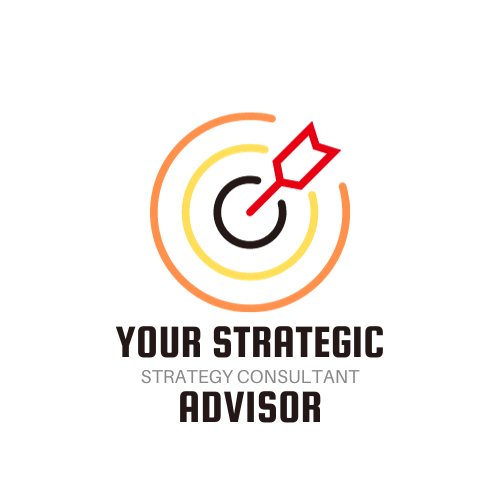The O’Reilly OSCON presentation by Bruce Eckel gave me the idea that I am not the first person to think in the direction of reinventing business that manage to keep employees happy. A lot of people have thought about this problem and I want to add my 2 cents to it. In a series of blog posts, I would like to explore the problem of how to keep employees happy as well as achieve business goals.
Why do workplaces suck? Why do 50–80% of people hate their jobs. This is the problem we attempt to solve overall. In simpler terms, the workplace is monotonous and you simply end up doing what someone asks you to do repeatedly. Creativity is not required as processes and standards are better suited for getting things done quicker and faster. I do, like Bruce, thought maybe it was just my fiercely independent nature that made me think like so. The pain I went through in my employee life, I had captured as a set of Poems called Wisdom Poems, and was my first literary work. Personally, as a technocrat with only programming and project/program/delivery management skills, it was a revelation that I could write poems.
Statistics continue to point out that most people are not happy and during the pandemic, came the great resignation. It reconfirmed my belief that things have worsened more and hence to restore the very fabric of society; we need a better system a hybrid system.
Technology-enabled work from home ensured that many companies survived but it has changed the people’s expectations of work.
Now we see billionaires threatening employees to return to work or get fired. The pandemic created challenges that made people choose between family or work. This is not a choice that a breadwinner should be forced to make under any circumstances. Health Care or food, taking care of your kid, a sick parent, or the next business proposal. People need better choices and career paths, that allow them to be flexible depending on life’s situation.
Hence the need for designing better businesses is definitely there. This is not an easy task as a business as an entity on its own and the core driver of the economy. However, if a business is meant for people to produce goods and services and another set of people to consume them, then its intent is on the well-being of the end customers, who are again people.
In the process of creation, we also produce various after-effects that in turn hurt the environment and other living beings in the ecosystem.
I would really look at where we are today as a direct outcome of an outdated education system, which was meant for creating factory workers in a hierarchical system. This system of education has not changed much and people have to come from this system to work at whatever roles are already conditioned for this type of work environment.
Well-educated people are a critical factor of production and as such an Input to the business. We can already see the gap between academics and industry which keeps growing day by day. It has reached a point in the software industry where college degrees are deemed no longer relevant.
Think about this for a moment, every student incurs a huge debt for college education in America, that takes years to pay off and is a burden to taxpayers.
By tweaking the factor of production which is the education of the people looking to work in the software industry, we can generate significant savings for the economy and generate affluence and a better chance at homeownership for the person.
By and large, the goal is to create an organization, were
- People love to be
- Can be creative and productive
- Everyone wants to contribute and pay it forward
Current Management thought basically originates from the MBA program that business schools teach. This works well for people who want to be senior management in a well-established large company but does not prepare them to become an entrepreneur or a startup founder. That is why we mostly see college dropouts and not ivy league educated get into entrepreneurship.
The goal of these programs is to produce leaders who can keep the business profitable as its primary goal and everything else needs to align with this. This is needed and I am not against a business being profitable. The way to get to this profitability with willing and happy employees is the challenge.
Dan pink in his book “drive”, observed that the carrot/stick approach to improving productivity works only in menial jobs.
Let us say you incentivize with better pay for stacking shelves in a department store. This works if they can stack 100 cans in an hour, they could touch 120 or even 150 with some incentive. But when it comes to “creative” jobs, and you offer them more money to think better, this is not going to work. This basically turns out into a negative human experience. You cannot incentivize creativity.
Studies have shown this since the 1940’s that more money cannot incentivize people beyond a certain stage in their careers. Managers know this but fall back to pay incentives, as they don’t know what else to do to keep the employees happy.
Money matters up to a certain point but we stop caring as what we ultimately care about is how we feel about being there and working in that job, the human experience of being in that position and doing the things you are supposed to do.
A good experience and a feeling of inner wellness will make us want to work more and contribute more and not seek petty rewards like promotions and paltry hikes.
What we really want is
Autonomy + Mastery + Purpose = Happy Jobs
Some organizations have managed to provide a degree of autonomy for certain roles. The people themselves have taken career paths to achieve mastery in their selected niche be it domain or technology.
Classic examples can be “the software architect” or the “the business analyst”. However, the sense of purpose most organizations are able to provide is in only achieving targets in monetary terms and after attaining some more and some more and so on. While a suitable pay incentive is linked with achieving targets, it does not matter anymore because you are unable to use it for your and your family’s well-being.
Business unit heads have been given Autonomy to run the units as they see fit, Autonomy was given provided the purpose was to achieve revenue and margin targets.
Some people need a higher purpose like making the world a better place than looking at a profit & loss statement to gloat over the margins made for the quarter.
The dichotomy to a happy work environment lies here.
Happy employees make more profit. Who would not want to work in a company that puts its employees the foremost in its consideration?
As people, we can attest to that but when you wear a manager’s hat, conflicting incentive structures within the organization often deprive you of doing the right thing for the employee and create inward conflict not aligned with your sense of purpose.
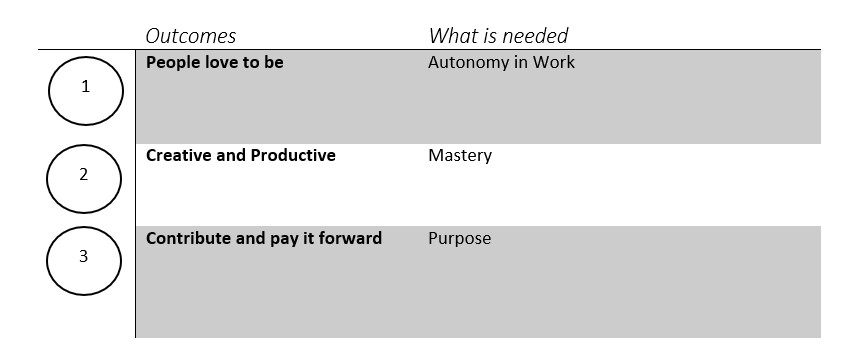
Traditionally, engineering outcomes via experimentation have been considered Management Science, particularly from Taylor’s school of Management thinking.
Business schools take up economics as a science and teach that it is possible to engineer outcomes if you tweak certain Input parameters to achieve desirable outcomes. They provide the knobs that one can turn to increase the productivity of your employees and increase profitability.
Modern management thought has its roots in the works of Fredrick Winslow Taylor, considered the father of scientific management. His famous work involves time and motion studies which were basically controlled experiments.
However, in reality, these concepts when it comes to tweaking the human inputs depend heavily on human psychology and conditioning to make people deliver to specifications. This backfires many times as humans are not robots but sentient beings.
Management considers itself to be in the driver’s seat and by pushing the gears and steering, it wants to take the organization in the direction it wants to go, which is oftentimes nothing more than increased market share, more revenue, and more profit, and scorching growth.
10,000+ management books are published every year hoping to make an impact, but very few do. The ones that do does focus more on self-mastery, personal productivity, and well-being like Stephen Covey (7 Habits of Highly successful people) and Robin Sharma (Monk who sold his Ferrari).
However, with Taylorism at its foundation, most businesses don’t get it right and they run as long as there is some demand for their products and/or services or until they can convince their investors of a good growth story and/or exit strategy.
Businesses fail as they cannot keep their employees happy in the long run, hence sales begin to falter, it gets blamed on lack of innovation on skeletal R&D teams. R&D teams blame it on funding and finance puts the blame again on the sales team and it is a never-ending vicious cycle. Yet the CEO needs to manage the board of directors and stock market analysts and continue to provide growth forecasts and meet targets to keep the shareholders/investors happy. As all this needs to happen every quarter, there is no time to take a breather and fix broken systems and processes and this loop continues until its logical end, which is bankruptcy or merger & acquisition.
Networking, often touted as the most critical element in MBA just serves those who were part of those programs to find jobs in places where their friends or classmates worked earlier. This obviously comes in handy when the going gets tough. So overall the value an MBA program brings to the table leans towards a century-old mechanism of running businesses when technology was at its nascent stage and even before computers came into the picture and enabled global growth.
Hence ground-up organizational design or redesign is critical in the post-pandemic phase of lean economic growth. The most critical parameters to think about are:
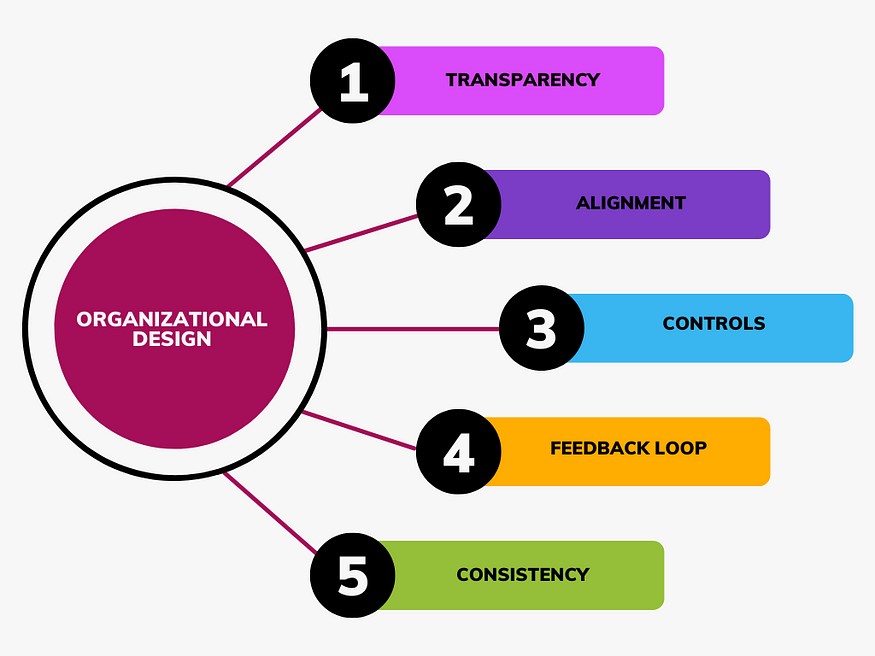
Transparency to business cycles, cash flow, and target shortfalls definitely motivates and encourages the team to contribute toward business growth. This largely depends on top-down communication and usually gets lost in the noise when the chain of command is very long. Town halls can help to address the issue however this is a key design principle when structuring a hierarchy, and ensuring effective communication.
Alignment refers to a low friction workspace where conflicts are minimized and everyone works towards the same goals and results. Misaligned departments sabotage each other and work to pull down one team to the detriment of the company’s interests. This type of thing can be very costly and create a very toxic work culture. Hence keeping teams with less or no friction in the work environment should be a design goal.
Controls provide a management mechanism to judge if a team is moving in the right direction and it further boils down to specific metrics measured at either individual or team levels. This has not been very effective in the real sense. Metrics and measures have always been twisted to state the truth you want to show rather than show the state of affairs as it is. People soon realize that controls can be manipulated and it starts to have a negative effect on the work quality of the concerned teams. KPP and KRAs are good to define but the captured ones are mostly fake or made to look good for higher-ups. A good example is the customer satisfaction score, where managers painstakingly develop the right customer touch point to provide a good score instead of a real score.
When we can clearly see how the control data is manipulated, the feedback loop meant for improving the processes fails to do its job. Goals on the other hand do ensure that the job is done and probably fetch you real customer satisfaction from the end customer.
Acknowledging deficiency in the processes be it tools, technologies used, or people skills on the ground, and aiming for consistent improvement should be a design goal. Many businesses that get ISO or CMMi certification claim to follow consistent processes but when data quality is poor, the net efficiency gain is on paper only and not real. Consistency works along with honesty.
Looking back into the 3 goals for a better, people-friendly organization, it can be mapped as per table below.
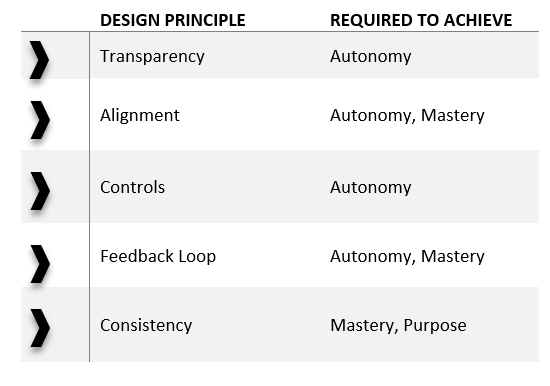
Hierarchy is meant for effective and streamlined communications but how true is it in today’s world of hyper-communication through multiple forms of social media?
A hierarchy designed for just communication is no longer relevant and should be discarded if it was adopted for this purpose. Line managers simply managing resources are a costly drain on the company’s bottom line if they are simple aggregators of information from the bottom and communicators of instructions from the top.
The figure below (borrowed from Bruce’s presentation) clearly indicates the dual nature of communication. Top-down communications are always arrogant, confidently presented, and the right branch of the image.
In the left branch of the image, both the faces represent a single person and depict the cognitive bias to pass down the message with skepticism while at the same time brightening the message when they are dealing with their superiors. So, in reality, hierarchy distorts communication, and the larger the chain of command, the more the distortion.
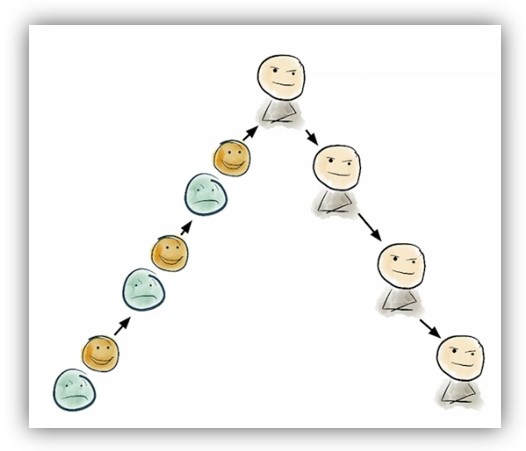
Communication in a Hierarchy
Communication styles over a period are a critical factor in how the company evolves its work culture. A strict hierarchy stifles innovation and establishes a command-and-control mechanism where you do as “told” or get fired.
Cultural changes pushed from the top down almost never work unless an employee-first philosophy is implemented visibly to all stakeholders. Management consultants almost always define a target operating model without a proper understanding of the company culture and people dynamics and leaders implementing those recommendations eventually see it fail and people getting blamed all over the place.
Some organizations continuously keep shuffling leaders and middle managers, which reduces the effectiveness of the new manager. It takes time to establish trust and by the time it is done, the next reorg kicks in and it keeps going on like that. This greatly impacts leader effectiveness. Insecure leaders employ this strategy to keep a strong hold on their immediate downline who they see as a threat to their power and position. Centralized control is almost always the enemy of innovation.
Cultural fit is as important as technical ability and hence the “mastery” goal involves people having soft skills. Technical debt can be addressed by training. However, cultural debt leads to toxic people in the organization poisoning the whole ecosystem. Once poisoned only snakes can work there. I am seeing too much of this right now. An increasing amount of workplace politics is due to a lack of cultural sensitivity and a lack of soft skills at the top management. Such people, if you recall from the earlier discussion, use their business school networking skills to attain their position. Those who align with this manager instead of fine soft skills actually pick up toxic behavior as the right thing to do for basic survival.
Another problem with really large corporations is there is no single culture for the company. Every division has its own culture in accordance with its leader usually a senior vice president or above and has a span of control of over 1500 to 5000 employees. Such organizations are like several mini-companies stitched together and held by common support functions like HR, Admin, Finance, Travel etc. People moving from one division to the other will find it like working on a new job. So are people working in various geographies of the same company. If you move from your base location to an overseas location, everything is new and no longer resembles the organization you knew earlier. So is working in a client location, the clients work culture also mingles with your organization with the net result that when changing projects too, similar culture issues have to be faced. This results in a culture shock and a serious adaptation required by the person undergoing these changes. Lack of sensitivity to such changes is a huge drawback for the people to be happy in a given role in the company.
Lack of cultural consistency in the organization severely impacts the “mastery” as well as the “purpose” goals for the happy employee.
Abraham Maslow is well known for his theory of human motivation. Man has psychological and physiological needs that start from basic needs and tend to get more and more complex. As a person grows and ages, his/her needs start toward higher self-esteem and self-actualization. As discussed earlier, at present businesses still continue to incentivize via more money as the only rewards mechanism. But will this continue to work as the employee matures into senior leaders in the organization?
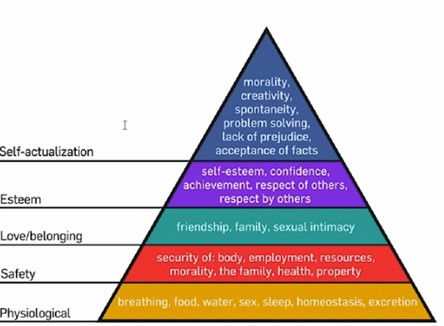
Maslow’s Hierarchy of Needs
Our study so far evolved the AMP matrix has the core components for a happy and fulfilled. Such an employee can contribute more to the organization as part of his purpose and pay it forward.

AMP framework for Happier Employees
If we are to look at a hierarchy of needs from a business perspective, the following will be a good way to look at it, similar to the Maslow needs Pyramid:
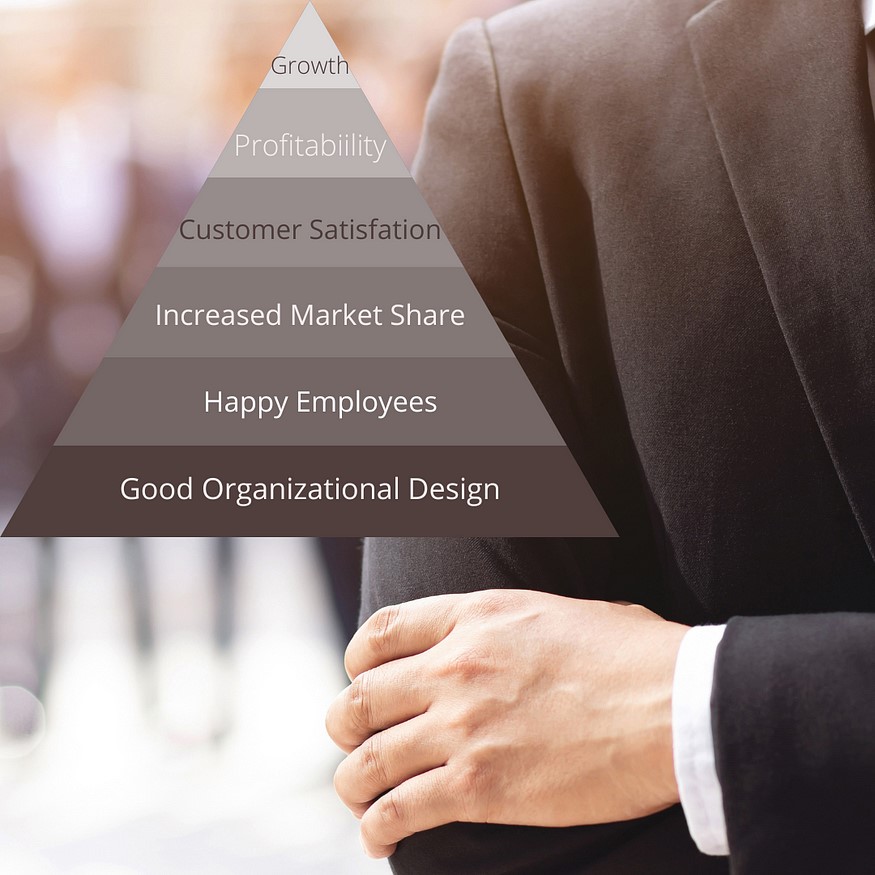
A framework for Business Needs
Self-esteem and self-actualization can in essence be replaced by the AMP framework in an organizational context that will align the business needs with the Individual needs and that will be a great experiment to try out and analyse the outcomes.
Self-esteem stems from their Job title, role, and the importance they hold in their respective workplaces. It is also evident that such people are given a degree of autonomy to run their teams.
For employees to be happy, companies need to enable these 3 pillars of Autonomy, Mastery, and Purpose for their employees as part of their organizational design process.
When an employee’s well-being is addressed as part of the design, you built it to last for several years. Come good or bad, it will survive the turbulences of economy, political change, war, and even climate change.
A strong organization definitely focuses on happy employees, is built ground up, and takes into account the needs of all stakeholders in the organizational ecosystem. Looking in the framework of A-M-P:

Growth need not be looked at in terms of numbers alone. Monetary growth makes you a large player taking part in improving society and the world at large. I have seen CEOs and business leaders visit the World Economic Forum for exactly the same reason, to take meta problems posing the world. Those who have handled challenges and attained sustainable growth can definitely share their insights in addressing global problems.
The AMP framework is a good way to reimagine business. At the end of the day, a business is for the people by the people who form the society that the business serves.
